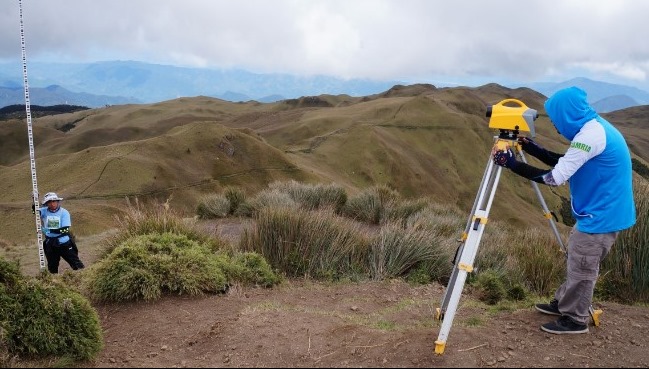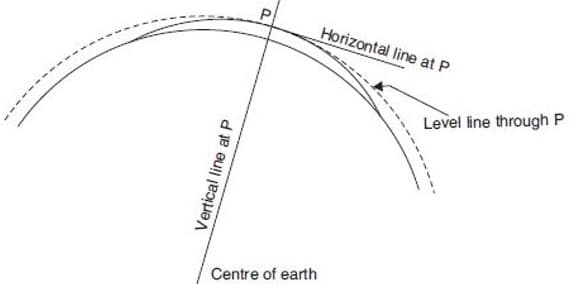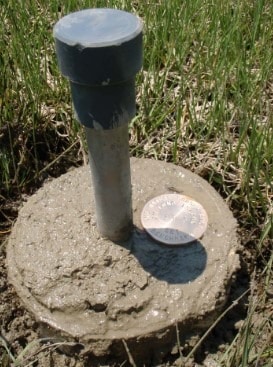Terms Used in Leveling and their Uses in Surveying
Various terms are used in leveling which must be understood clearly before starting surveying. Leveling is conducted in the field to know the elevation difference between two points. To find the elevation difference, at least the elevation of one point must be known.
What if the elevations are not known or how to proceed with leveling with unknown elevation points? It is not a big task if basic terms of leveling are known. So, one must know these basic terms before studying the art of leveling.

Terms Used in Leveling
The general terms used in leveling are:
- Vertical line
- Horizontal line
- Level surface
- Datum
- Benchmark
- Mean sea level
- Reduced level
Vertical Line
It is the line which is indicated by plumb at required station. So, this is also called as plumb line. It’s just decided based on the consideration of earth’s gravity.
Vertical line connects the station point to the center of the earth. A plumb is released from the instrument height with the help of thread and instrument is set up at that point as its center.
Horizontal Line
Horizontal line is the line of sight of instrument which is tangential to the level surface and It is perpendicular the plumb line. The surface along horizontal line of sight is called as horizontal surface.

Level Surface
Level surface is the continuous surface parallel to the mean spheroid of the earth. The line representing the level surface is termed as level line.
The level line makes right angles to the vertical line or plumb line at any point. It means the any point on level line is equidistance from the center of earth. Even though it is a curved surface, it is considered as plane surface for smaller area works.

Datum
Datum line is the reference line with respect to which the levels of other station points are fixed.
Mean Sea Level
Mean sea level is established by taking the average height of tides in the sea over a very long period (generally 19years). Mean sea level or MSL is used as datum level for all important surveys of that zone.
Reduced Level
Reduced level is the vertical difference between the level point and datum line or the mean sea level.
Benchmark
Benchmark is the point laid above or below the datum line with a known elevation. Bench mark is considered as check for the other level points.
There are different types of bench marks are available in the surveying as follows:
- Great Trigonometrical Survey benchmarks
- Permanent benchmarks
- Temporary benchmarks
- Arbitrary benchmarks
Great Trigonometrical Survey Benchmarks
Great trigonometrical bench mark or shortly GTS benchmarks are very accurate, and they are established by conducting high precise surveys. GTS benchmarks are decided by taking mean sea level as datum. These are generally established by higher survey authorities of particular country in all points of the country.
A concrete pedestal with bronze plate at its top is provided at a point where GTS benchmark is located. The bronze plate consists the information or value of the benchmark on its top. These pedestals are generally protected by masonry structure build around it.
Here is some of the list of agencies for different countries, who established the GTS benchmarks in their respective countries.
| Country | Agency / Authority |
| India | Survey of India |
| United Kingdom | Ordnance survey |
| United states |
|
| Japan | Geographical Survey institute |
| Canada | Natural Resources Canada |
| New Zealand | Land Information New Zealand |
| Pakistan | Survey of Pakistan |

Permanent Benchmarks
Permanent benchmarks are established with reference to GTS benchmarks. They are established by local state government agencies or railways at railway stations, public buildings, at bridges etc. Permanent benchmarks are useful for future references also.

Temporary Benchmarks
Temporary benchmarks are created by the surveyors in the field to mark the point in the field up to which the survey is completed. Then, it is easier to continue the survey from that point after large gap or on the next day of work.
The temporary bench mark point should be decided in a way that the object or point should be permanently fixed in that position.

Arbitrary Benchmarks
In Small survey works or engineering projects it is important to know the difference in elevation of two points. When this happens, we cannot predict the exact reduced level of that area with respect to mean sea level.
So, some fixed points in that area are arbitrarily taken as bench marks and values are assumed. The assumed arbitrary bench mark values may be 50 m, 100 m, 200 m etc.
No comments:
Post a Comment